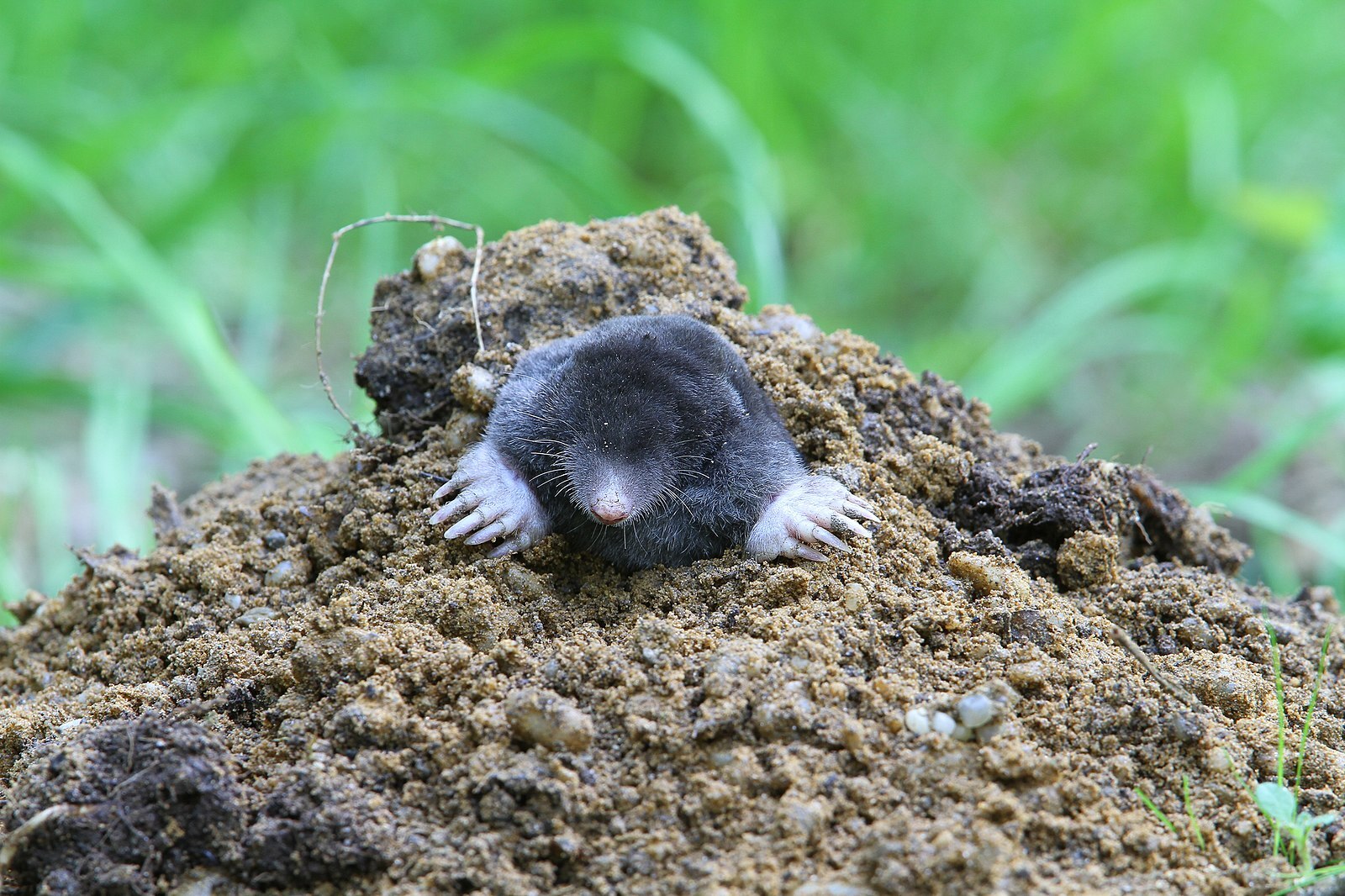
How Moles Affect Your Lawn and What You Can Do About It in Northeast OH
Moles. They can wreak havoc on Northeast Ohio lawns.
How? They create unsightly dirt mounds and damage grass roots with their intricate tunnel systems.
Yep, these creatures and their activities often lead to significant aesthetic and functional damage in your outdoor spaces. And no one likes the mess they leave. It doesn’t do anything for the green grass you love. It can even make it look like you don’t take care of your lawn at all. Not cool.
How to get rid of grass moles involves a few strategies, including:
Let’s talk about how moles affect your grass, what mole damage to lawns looks like, what you can do about it, and how to get rid of moles from the lawn.
How Moles Impact Your Lawn
First, let’s understand how moles work.
Moles look different from voles in that they have pointed snouts, large paws for digging in your lawn, and nearly invisible eyes and ears.
Moles are meat eaters. This means they love food like earthworms, grubs, and insects.
To get at this food, moles dig visibly raised tunnel ridges, leave mini volcano-shaped soil mounds, and create more of a closed tunnel system without visible entrance holes.
If you’re seeing tunneling in your lawn that looks like this description, you likely have moles. And if you think you see a lot of tunneling, you may even think there is a whole army of moles in your lawn. However, typically only two or three moles occupy the same tunnel system. But because moles eat between 70% to 100% of their weight in food each day, they have a large home range, so very few of these rodents can be causing extensive yard damage from moles. Five moles per acre is usually what’s considered a large mole population.
Moles are lonely creatures, living like hermits in their underground burrows. When the weather cools, they just retreat deeper into the soil.

How to Get Rid of Moles From Your Lawn
If you’re looking for how to get rid of grass moles, this can be tricky.
Here are a few strategies that work.
Trapping
Trapping is one effective way to stop mole damage to your lawn.
This strategy involves placing traps in active feeding tunnels that moles use year-round.
You or a mole removal professional can identify active tunnels by collapsing a section with your foot and checking to see if it’s repaired 24 hours later.
Baiting
Another strategy to help when it comes to how to get rid of grass moles is using baits that mimic earthworms, one of the mole’s food sources.
These baits contain active ingredients that are designed to appeal to moles.
Repellents
There are some repellents that can deter moles, too, to stop yard damage from moles.
These products usually contain something like castor oil and add a nasty smell the pests don’t like. These products come in both liquid and granular forms and can be found at home improvement stores.
Grub Control
One of the most effective strategies that helps stop mole damage to your lawn is grub control.
Why? Because grubs happen to be one of the favorite food sources of moles.
What are grubs? If you have ever heard of Japanese beetles, the northern masked chafer, or June bugs, then you know what white grubs are. These fat, juicy, C-shaped, milky white creepy-crawlies are the larvae of these adult beetles.
In spring, grubs dig their way up from deep in the soil to just beneath the grass surface and begin to feed on your lawn’s root system. But because your grass is vigorously growing in the spring, it’s less likely that you’ll see damage. Though, when the moles come for the grubs, you’ll see the mole damage possibly before the grub damage. It’s a double-whammy of grass destruction no one wants.
Both grubs and moles cause lawn damage. If you catch the situation early enough, your lawn can bounce back with proper care. But if you let these infestations continue, you’ll need more repair strategies to help your lawn return to good health.
The key to getting rid of grubs — and the moles that eat them — is to take care of grubs in their early stages or even before they hatch so they don’t have a chance to cause serious damage to your lawn. This means prevention is your best bet. May through July is the window for early prevention of grubs. This is best done with a preventive treatment to your lawn.
Turf Pride offers a grub solution that provides season-long control. This means it lasts all through summer and fall. We will also come back and inspect your lawn in the fall to ensure grubs haven’t returned if you see some signs that are worrisome to you. Plus, we offer other lawn care services, such as fertilization and weed control, that can enhance your lawn’s health and help heal any damage. While we’re on your property taking care of your lawn, we will continue to monitor for grubs to make sure they stay away.
/Live%20Website%20Images/close-up-grubs.jpg?width=1280&height=960&name=close-up-grubs.jpg)
Need Some Professional Help With Mole Damage To Your Lawn?
Mole infesations in Northeast Ohio can be frustrating for sure.
But addressing the situation promptly is the best way to limit yard damage from moles.
Usually a mole deterrent combined with grub control can help quite a bit with controlling these pests.
If you’re looking for some grub control guidance, let Turf Pride help. We can offer a solution to ensure limited damage to your lawn and help you get rid of two pests at once.
/Live%20Website%20Images/turf-pride-receptionist-on-phone.jpg?width=1200&height=676&name=turf-pride-receptionist-on-phone.jpg)
Want to get back to enjoy a lawn that is not full of tunnels and meat-eating moles? Give Turf Pride a call and we’ll bring our proven lawn care experience and create a custom plan for your Northeat Ohio yard. Get started today with a free quote.


